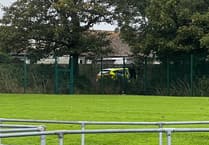Please remember that it is often better for you to take injured wildlife directly to your nearest veterinary practice rather than call us.
The veterinary staff will take the animal from you for emergency treatment and you will not be charged.
The island is well served with veterinary practices and they are located in Douglas, Onchan, Santon, Castletown, Port Erin, Peel, Ramsey and Bride.
For advice about how to catch, contain and transport a wild animal, with consideration for both your safety and that of the animal, please see the ’welfare’ section of our website - www.manspca.com.
As is usual at this time of year, we receive several calls a day about young birds that are not injured, and so don’t need to go to a vet, but who seem to be helpless and vulnerable.
Herring gulls, in particular, need to leave the nest and spend time on the ground in order to finish growing their flight feathers.
Most people who call us are simply concerned about the birds’ welfare, and are more than happy to keep a watchful eye on them and ensure they have a bowl of water to drink from.
Some callers, though, view the gulls as ’vermin’, not least because parent birds can be aggressive towards humans when they are protecting their young.
This doesn’t last for long, and our advice is to use an umbrella for protection, or wear hat or cap.
There is evidence to suggest that gulls are attracted to the colour red and that they may pick on people wearing red clothing.
Adult gulls have a large red spot on their, otherwise yellow, lower beak which is used for ’social signalling’ to other gulls, and it’s how young birds feed. They peck at the red spot to stimulate the parent bird to regurgitate food.
Herring gulls are very intelligent and they adapt to their environments as they seek out food and nesting places.
This can bring them into contact, and conflict, with humans and we have had recent reports of gulls being deliberately run over on our roads.
This is both immoral and illegal. Gulls are a protected species under the Wildlife Act 1990, and anyone harming them or their nests is committing a criminal offence.
You might think that herring gulls are everywhere, and that there are too many of them.
However, the species is declining significantly across the UK with its population having decreased by more than 50% in 25 years.
In 2009, the RSPB placed the European herring gull on its ’red List’ of threatened bird species, affording it the highest possible conservation status.
Depleted fish stocks and marine pollution, not least the amount of plastic in our seas, are the main causes of the decline in numbers.
But there is hope that this decline can be halted.
The Isle of Man now has 10 Marine Nature Reserves (MNRs) that stretch around most of its coastline.
These areas offer protection to the wildlife and habitats that surround our shores by restricting fishing and other activities, such as the removal of sand or gravel.
Creating a better ecosystem will improve fish stocks which, in turn, should help our seabirds.
We rescue an average of 70 young herring gulls a year, and release them at various sites around the island’s coastline once they can fly.
We are placing a green leg ring on the birds as we release them, so that we can identify them if they become injured or disorientated.
We want to better understand how they cope with life in the wild, and how quickly they adapt.
We are optimistic that the majority of the gulls we release copy other gulls and learn where to find food, but it would be good to have more evidence of this.
If you see a gull with a green leg band, please let us know so that we can record the sighting.



.png?width=209&height=140&crop=209:145,smart&quality=75)

Comments
This article has no comments yet. Be the first to leave a comment.